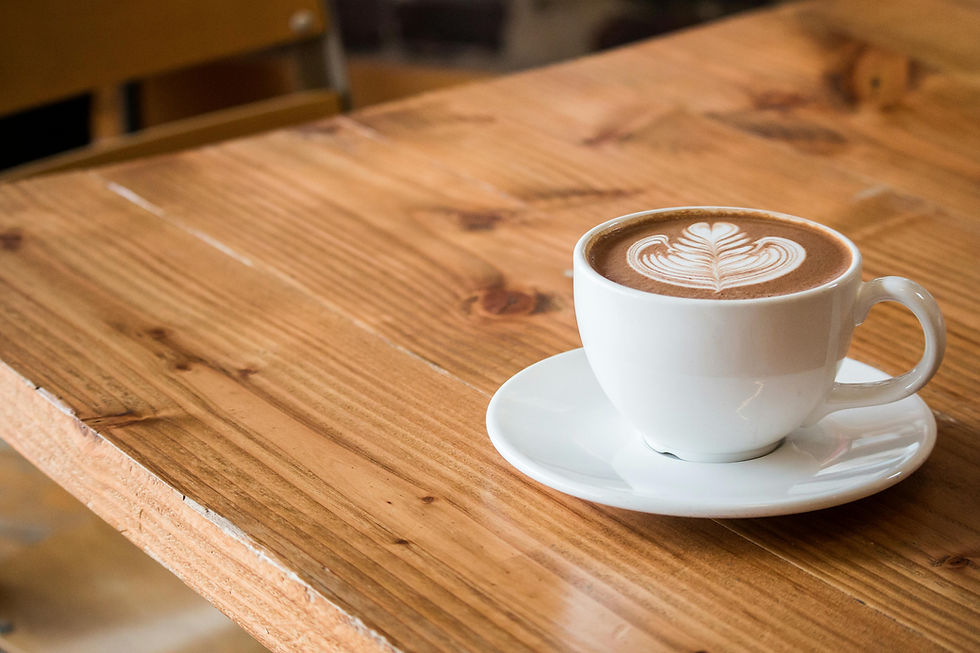Mastering the Art of Filter Coffee: A Beginners Guide
- Elevated Magazines

- Aug 17
- 3 min read

Brewing the perfect cup of filter coffee is an art that coffee aficionados and beginners alike can appreciate. Its delicate flavours and aromatic subtleties offer a distinctive experience, differentiating it from the robust intensity of an espresso or the creamy consistency of a latte. This beginner's guide will provide a comprehensive overview of mastering the basics of filter coffee and how to appreciate the nuances of this beloved brewing method.
Understanding Filter Coffee
Filter coffee refers to a method of brewing where hot water passes through ground coffee, usually contained within a paper or metal filter. The resulting brew is lighter than espresso-based drinks and often highlights the more intricate flavours of the coffee beans. To start your journey towards becoming a filter coffee connoisseur, it is critical to understand the components involved in its brewing.
The Right Equipment
The first step to brewing filter coffee is choosing the right equipment. Options range from the classic drip coffee maker to pour-over devices like the V60 or Chemex. Each method yields a slightly different taste and texture, but all operate on the principle of extraction through filtered water.
Choosing Your Beans
Bean selection is vital. Filter coffee is known for its ability to showcase a coffee’s profile – from floral and citrusy notes to chocolatey and nutty undertones. Opt for high-quality, freshly roasted beans to ensure the fullest range of flavours. It’s also recommended to grind your beans freshly before each brew, as pre-ground coffee can lose its nuanced flavours quickly.
The Grinding Process
Grinding your coffee beans to the correct coarseness is essential. For filter coffee, a medium-to-coarse grind is most suitable as it allows for optimal flavour extraction without passing through the filter. Uniformity in the grind size is equally important to avoid an uneven brew; some parts may be over-extracted while others are under-extracted.
Water Temperature and Quality
Water quality can make or break your coffee experience. Use filtered water if possible, to avoid any impurities that might affect the taste. The temperature of the water should be between 90-96°C to extract the coffee flavours effectively without extracting the bitter components.
Brew Ratio and Technique
Mastering the brew ratio is another aspect of filter coffee artistry. A common starting point is a 1:16 coffee-to-water ratio, adjusting according to taste. As for technique, ensure an even pour and consider blooming—where you pour enough water to wet the grounds and let it sit for 30 seconds. This process allows the coffee to degas, leading to better extraction.
Patience in the Process
Patience is key when brewing filter coffee. Each method requires a certain amount of time and attention to detail. Rushing the brew could lead to inconsistent extraction. Allow the coffee to drip at its natural pace, and savor the anticipation as your brew completes its cycle.
Tasting and Adjusting
After brewing, it’s important to taste your filter coffee and take note of its characteristics. Is it too bitter, sour, weak, or strong? Adjusting the grind size, brew ratio, or water temperature in your next brew can improve the final product and gradually lead to finding your personal sweet spot.
Caring for Your Equipment
Cleaning and maintaining your equipment is crucial in consistently producing quality filter coffee. Residues and oils can accumulate in your equipment, affecting the taste of subsequent brews. Always clean your gear thoroughly after each use, especially the filters and areas where ground coffee sits.
Exploring Different Filter Brew Methods
As you gain more confidence with brewing filter coffee, explore different methods. Each technique offers a subtle variation that might suit your palate better. Experiment with factors like brew time, water flow, and filter type to uncover your preferred brewing style.
Filter Coffee's Place in the Coffee Culture
Filter coffee occupies a treasured place in the broader coffee culture. Unlike espresso-based drinks that require specialized machinery, filter coffee’s simplicity has made it a fixture in homes and cafes worldwide. Its versatility and ease of brewing make it an accessible starting point for coffee newcomers.
The Social Aspect of Coffee Brewing
Brewing filter coffee can be a social activity, inviting conversation and shared experiences. Whether it's a morning routine with family or a break in the afternoon with colleagues, the act of brewing and enjoying a cup of coffee can bring people together, strengthening bonds through a communal appreciation for this delightful beverage.
Conclusion
In conclusion, mastering the art of filter coffee takes time, experimentation, and a keen attention to detail. By understanding the importance of equipment, beans, grind, water quality, and brewing techniques, you are well on your way to achieving that perfect cup. As with any skill, practice is key, and every brewing session is an opportunity to refine your technique. Use this beginner's guide as your roadmap to delve into the enriching world of filter coffee, and with each brew, come closer to perfecting this venerable craft.
